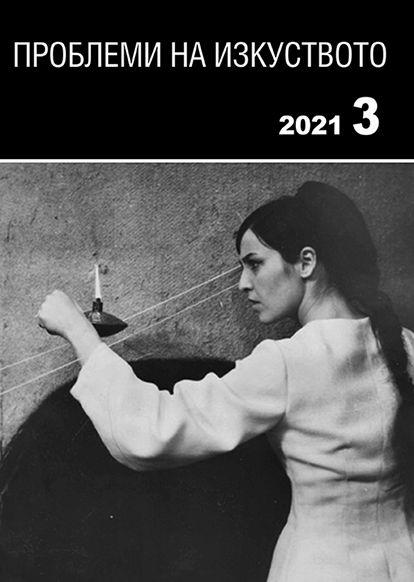Античната драма в новогръцкия театър (втората половина на XIX – 30-те години на XX в.)
The Ancient Drama on the Stage of the New Greek theatre (The Second Half of the 19th – 30s of the 20th Century)
Author(s): Vanya Lozanova-StanchevaSubject(s): Theatre, Dance, Performing Arts, Fine Arts / Performing Arts
Published by: Институт за изследване на изкуствата, Българска академия на науките
Keywords: ancient classical drama; modern Greek theatre; Greek national identity; classical cultural heritage; Delphic festivals
Summary/Abstract: The genesis of modern Greek national identity: At a first level of analysis, the topic is placed in the context of the genesis of the modern Greek national identity along the axis of Hellenism, dominated by the intellectual influences of factors external to the Greek nation. The first attempts to stage an ancient Greek drama and mainly a tragedy are related to the beginnings of the formation of national consciousness by returning to the cultural heritage of the ancestors. In the context of the formation of the independent Greek nation, interest in ancient dramas increased and they began to be presented more and more often, burdened with the linguistic and ideological debates of the time. In the same context is posed the problem caused by the specific interests and artistic tastes of the Greek theatrical audience and its ascending to the processes of spiritual Revival preferences. The ancient Greek Theatre as a function of the cultural policy of the Greek state towards the classical heritage. At a second level of analysis, which is a kind of continuation of the first, the phases of imposing the ancient Greek theatre as a function of the cultural policy of the Greek state towards the classical heritage aretraced. The focus is on the interpretation of the dramaturgy of the ancient classical authors on an open stage in the authentic context of the ancient amphitheaters: the theatre of Dionysus Eleutheros under the Acropolis, the Odeon of Herodes Atticus, the amphitheater in the sanctuary of Apollo at Delphi with a strong emphasis on the two Delphic festivals in 1927 and 1930. Thus, in the time horizon of the 19 th – beginning of the 20 th century, two relatively parallel tendencies can be perceived in the stage models and interpretations of the ancient Greek dramatic works, in which the linguistic and ideological debates of the time are reflected. The first relatively earlier tendency is characterized by a philological approach to ancient drama as a text requiring “a correct” interpretation based on archaic grammatical and syntactic rules. From the 19th century onwards began the professional theatrical approach to the ancient dramatic text, which placed the new Greek scene in the context of the prevailing modern trends of European perspectives.
Journal: Проблеми на изкуството
- Issue Year: 2021
- Issue No: 3
- Page Range: 3-13
- Page Count: 11
- Language: Bulgarian
- Content File-PDF

